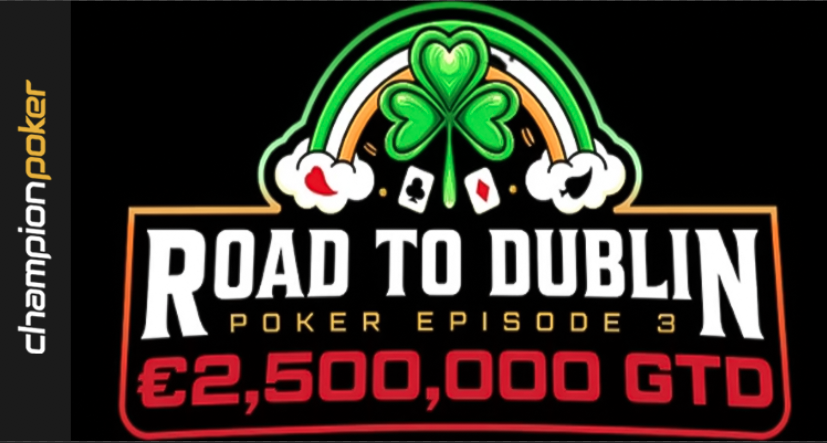

What are the rules of Stud Poker?

If you are
a poker lover or fan, it goes without saying that we are facing one of the
richest card games in terms of variety and modalities that we can find. If we
had to point out the variant of poker par excellence, we are undoubtedly
talking about Texas Hold'em, but has it always been like that? The truth is
that it hasn't.
Today's
post is dedicated to discover what was the most practiced poker modality until
the arrival of Texas Hold'em: Stud Poker. One of the big differences
between one variant and the other is that, in Stud Poker, players will keep
part of the cards of their hand always uncovered, so it is included in what is
known as open poker.
Stud Poker
is a modality of this card game completely different from what any poker player
is used to. For example, we do not find community cards, as we find in Texas
and Omaha, but each player receives several cards with which they have to make the
best possible combination of a total of 5.
Within Stud
Poker there is a wide range of modalities: Caribbean stud poker;
Mississippi Stud Poker, Mexican Stud, 7 Card Stud Poker ... The most
practiced is the latter, in which, players receive 7 cards of which 3 will be
covered and 4 uncovered.
Below, we tell you how to play stud poker and which are the rules to manage the game of one of the most important modalities of the card game par excellence.
How to play Stud Poker

Stud Poker is not, in itself, complex to play, but it is somewhat more complicated to master than other more popular modalities such as Texas Holdem or Omaha. We tell you, step by step, how the game is played.
The "ante
First of all, at the beginning of each Stud Poker game, all players have to place an "ante" bet, that is, a small initial bet at the beginning of each hand. It is worth remembering at this point that, unlike Texas Holdem, there are no blinds in Stud Poker. The equivalent of these would be the "ante" or mandatory bet.
Third Street
Next, the
round known as "third street" begins, in which 3 cards are dealt to
each player, two of them covered and one uncovered. The player who has the
lowest uncovered card is the one who starts the betting.
This bet, known as "bring-in", will correspond to half the value of a small bet, that is to say, in a table where the ante is 2€, the "bring-in" will be 1€. From this point on, the bets start to develop to the left.
Fourth street
In the
second round of the game, known as "fourth street", the players
receive another face-up card. In this case, the player with the best
exposed hand formed with these two cards will start talking. This player may
bet or check.
At this point of the betting, if a player has a pair in his hole cards, he can make a big bet which, following the example we have given, could be 2€. If no player has a pair, the bet will remain small.
Fifth Street
Once the bets are even, a fifth card is dealt and the "fifth street" begins. Here again, the player who shows the highest value cards speaks again. From this round on, the value of the bets and the raises will correspond to the value of the big bet.
Sixth street
We continue to the sixth street, round in which the players receive a new face card. Now, the player with the best hand so far will bet.
Seventh street. Final
round
After this,
the seventh card opens the seventh street or river corresponds to the last
card of the hand, this time covered. Thus, we are left with a total
of 7 cards, 3 covered, whose value is known only to the player himself, and 4
uncovered.
The player with the best combination of exposed cards speaks and the last round of betting takes place. The last player to bet is the first to show his cards. The player with the best hand wins.
Stud Poker Rules

Once we have understood how to play this modality, it is important that we are clear about some rules regarding betting and game turns.
Deal of cards in Stud Poker
First of
all, as we have seen, not all the cards are dealt at the same time, but
they are dealt throughout the betting turns or streets.
Another
aspect concerning the dealing of cards is that, if in the final round, there
are more than two players at the table, they will all receive their last
card face down.
A
player, whose last card is face up, has the option to declare all-in, as long as he does so before the
betting round starts. In case there are only two players left and the first
player's final card is dealt face up, the second player's card will be dealt in
the same way.
We must also remember that, in Stud, there are no community cards. Players can only play with the cards they are dealt.
Players in Stud Poker
A maximum
of 6 players can play in the Stud.
As far as
tournaments are concerned, in the third street round, if the player with the
lowest card goes all-in, but does not have enough chips to “bring-in”, the
player to his left must bring-in, regardless of the value of his hole card.
However, if the player has enough chips to pay the ante, but not enough chips
to pay the full bring-in, it will be considered both all-in and bring-in.
In the final betting round, if there are several players left, the last player to bet or raise must show his cards first. In this final round, the hands will be revealed clockwise.
Betting in Stud Poker
As we know,
in Stud, there are no blinds but a mandatory ante bet.
The first
round of betting starts with the ante, initiated by the lowest hole card. In
the following rounds, the highest hand on the table begins to speak. In case of
a tie, the player who received the cards first speaks. In other words, the
position breaks the tie.
Stud
Poker is played with a betting limit during the first four rounds. The bets are doubled from the
fifth street onwards. This fixed betting limit determines that if a pair
appears on fourth street, i.e. with the second card uncovered, any of the players
can bet at the higher or lower value.
If a player
is not present at the table when it is his turn, he loses the ante. If
he does not return in time to speak, he loses his hand when the bets
reach his place.
Now that
you know how to play this game, what are you waiting for to try it?
You may also like

Poker card games beyond poker: what they are and how to play them
As soon as you see the poker cards, a poker game comes to mind, forming hands and thinking of strategies for each street. But there are more games besides poker that can be enjoyed with those same...

Tom Bedell Triumphs in Tirana: From "Rebuy King" to PLO Championship Winner
Tom Bedell Triumphs in Tirana: From "Rebuy King" to PLO Championship WinnerA Dramatic Turnaround: From a Rough Start to Poker GloryThe Arena Casino Tirana in Albania hosted the PLO Grand Slam 2025,...

Manel Montalbán Shines at PokerStars Open Campione
From an Online Satellite to Six Figures: Manel Montalbán Shines at PokerStars Open CampioneFrom an Online Satellite to the Poker EliteThe PokerStars Open Campione made a spectacular debut, attracti...












